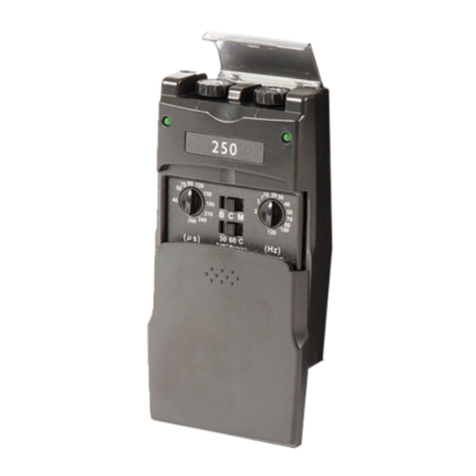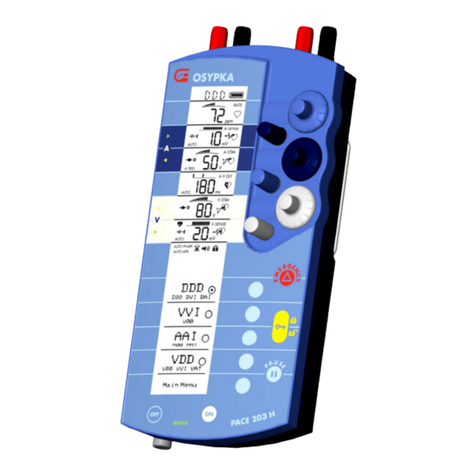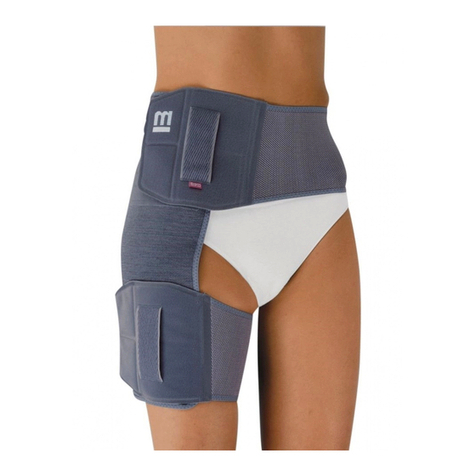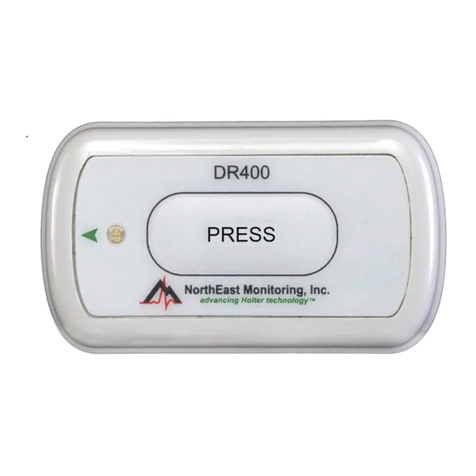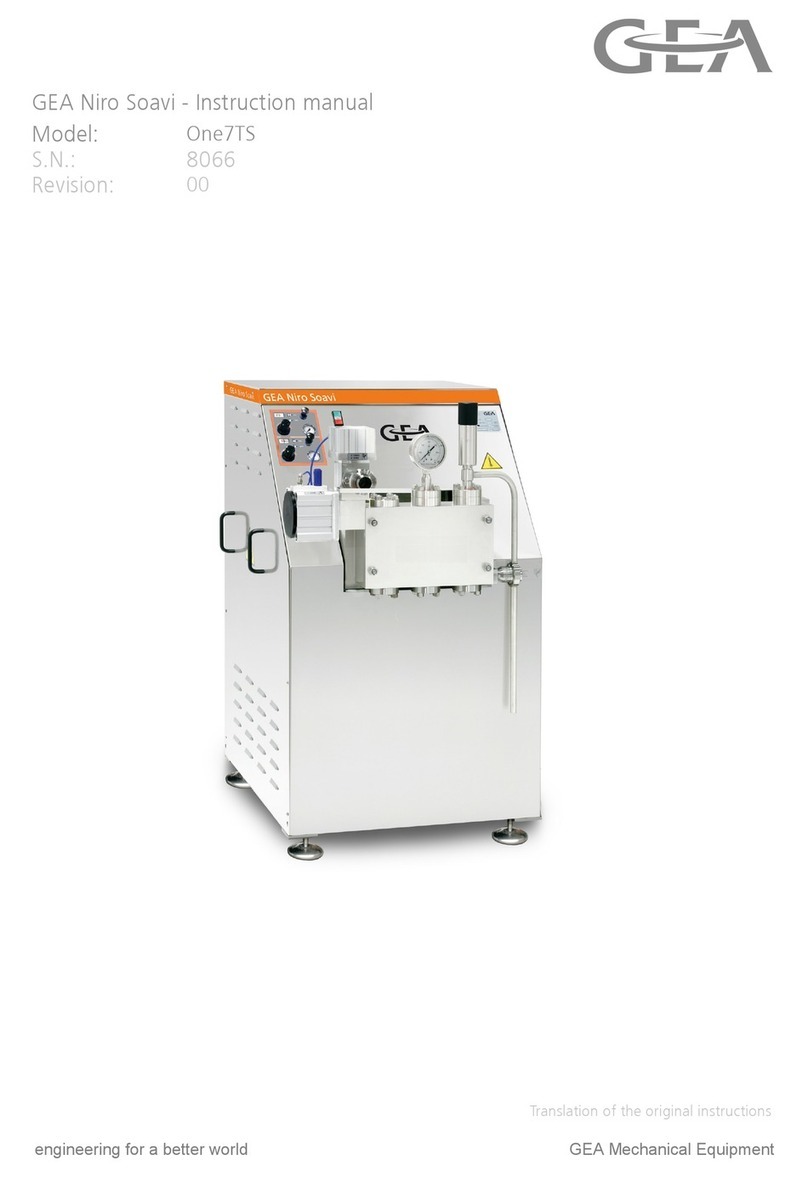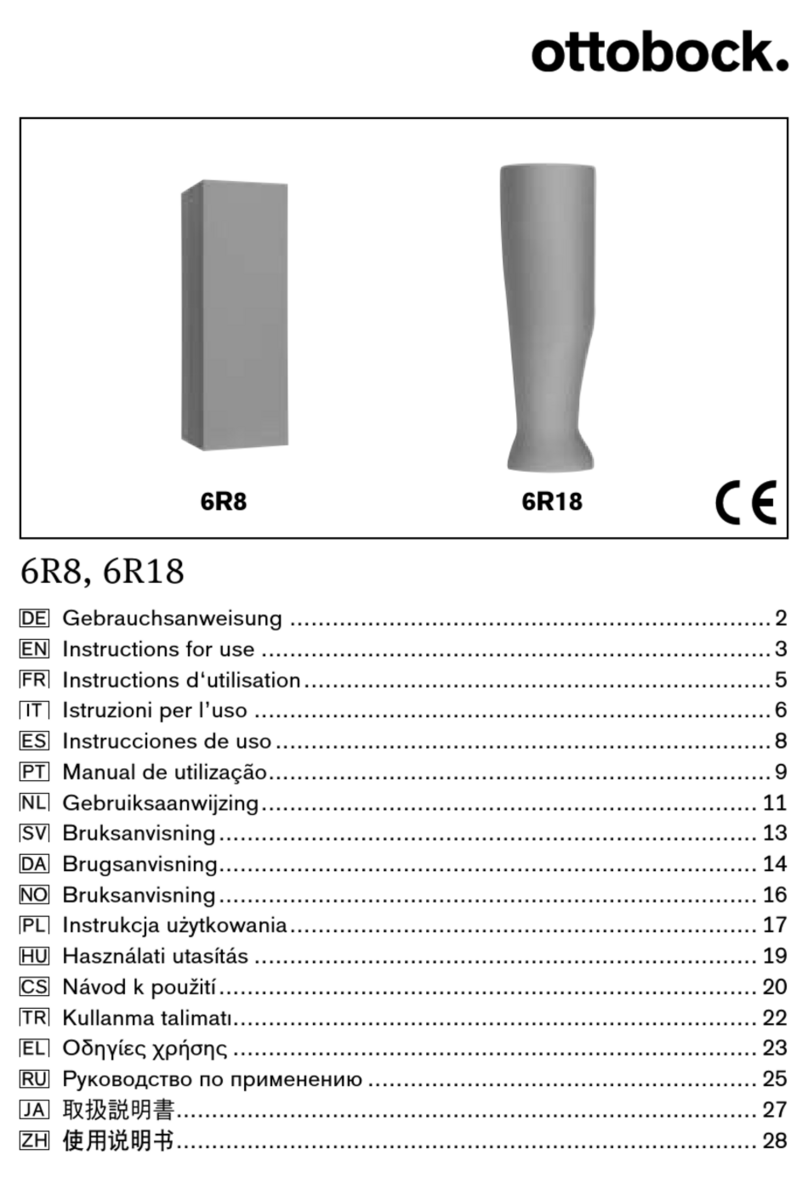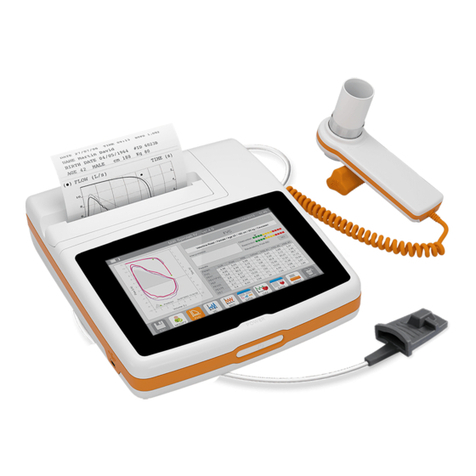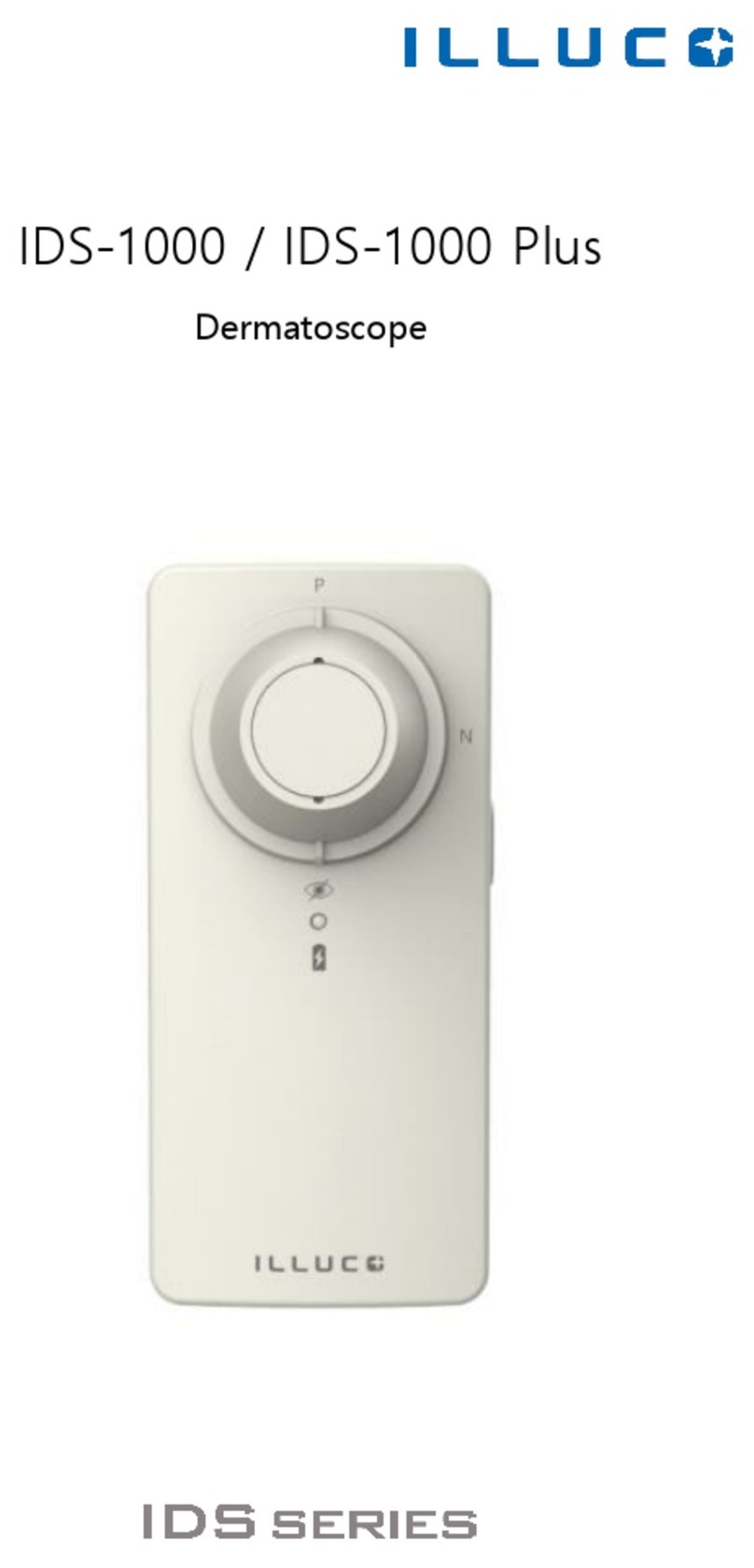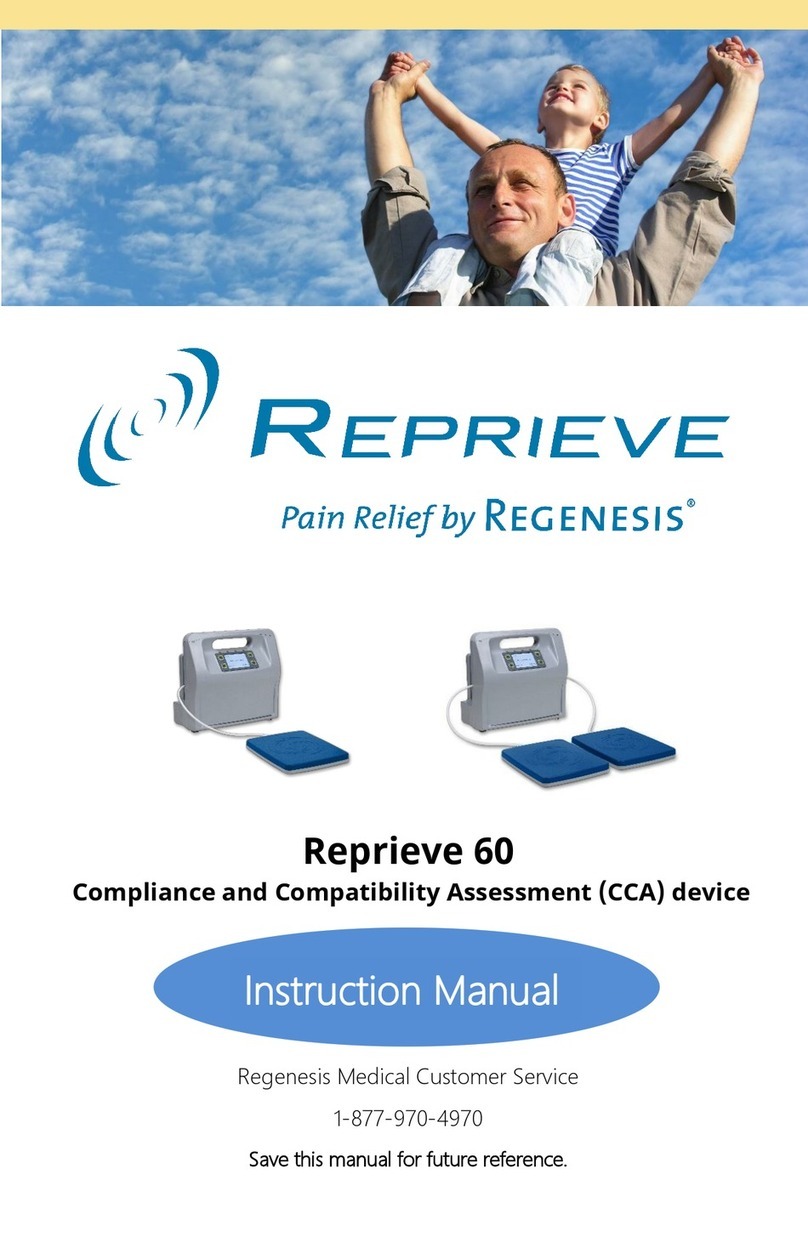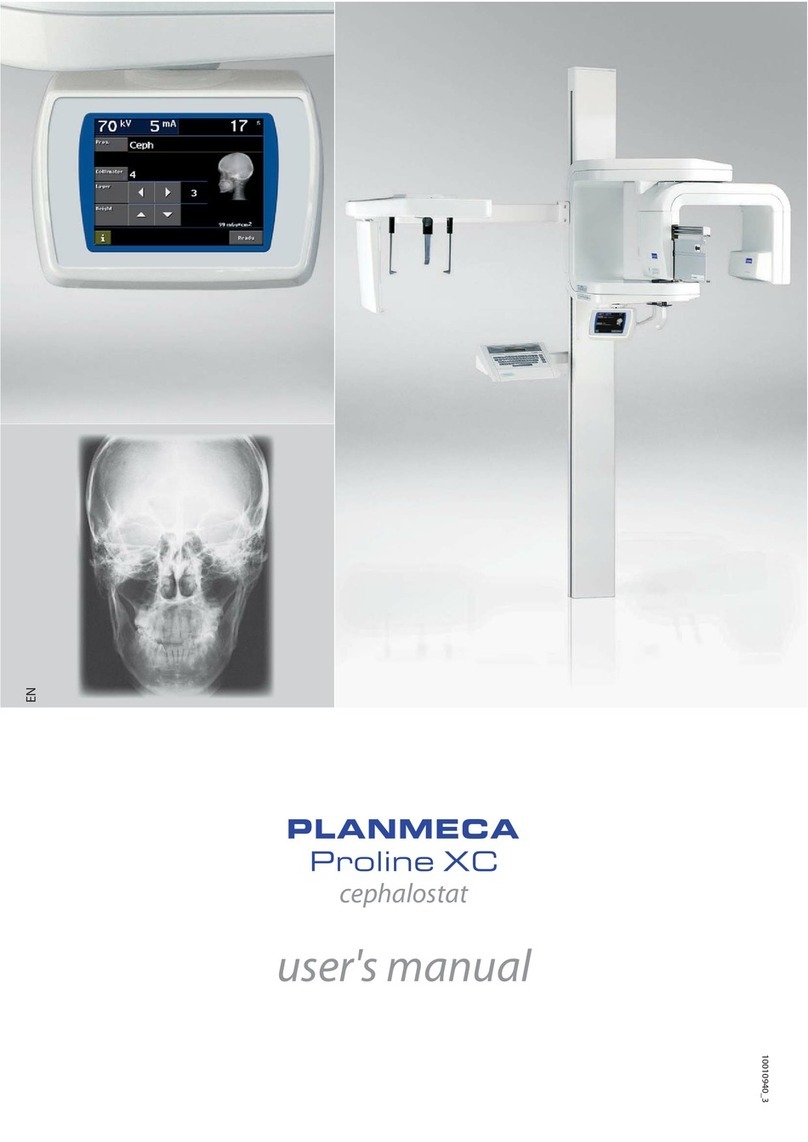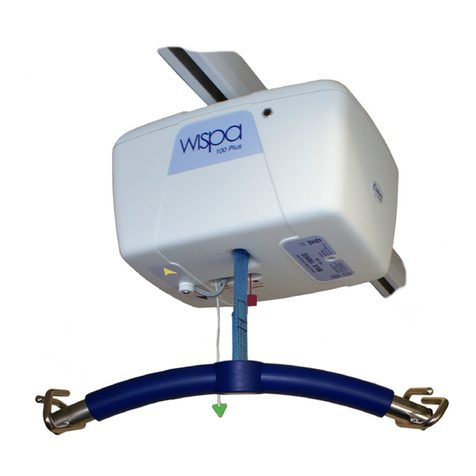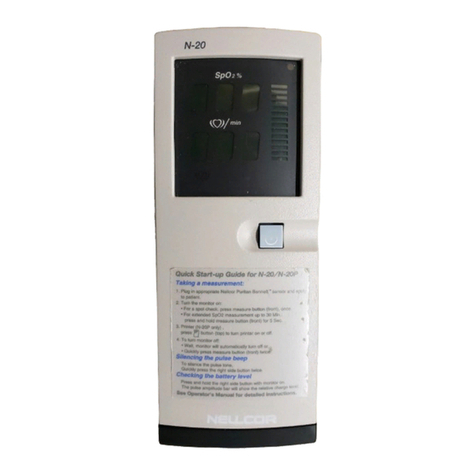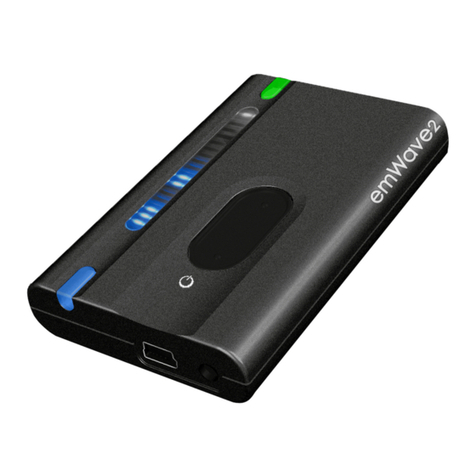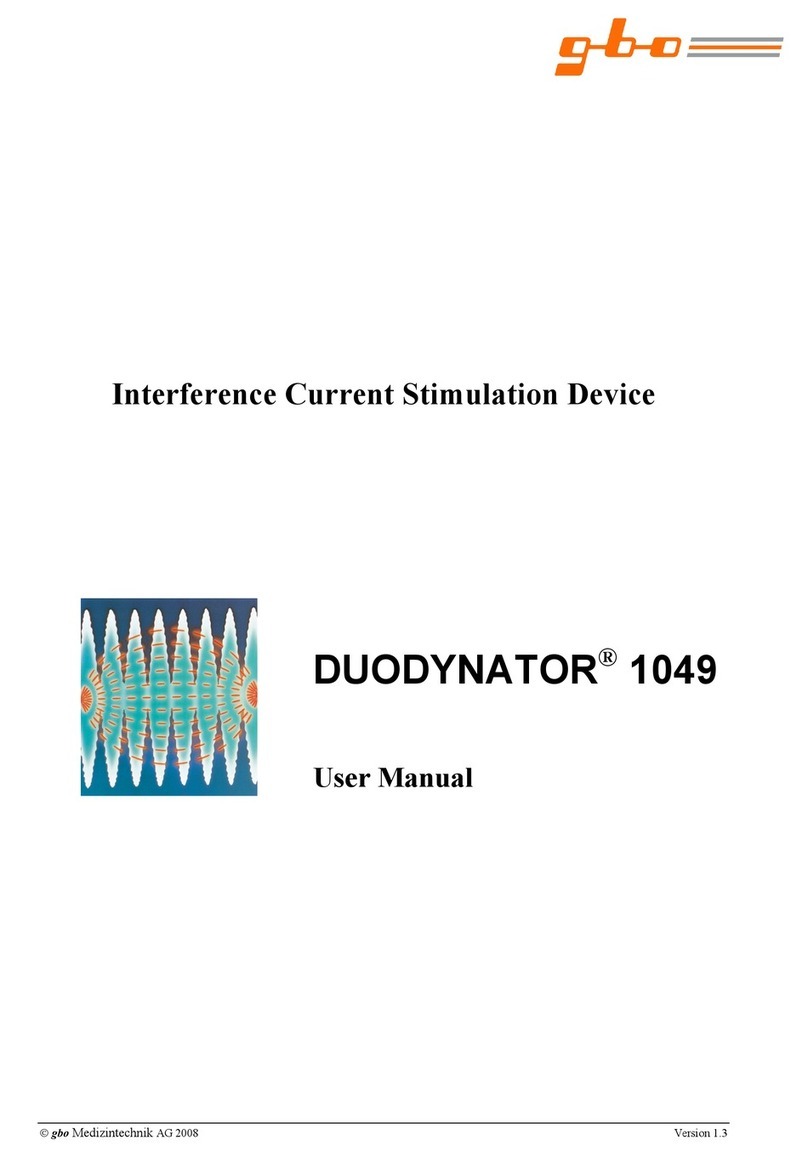BodyMed ZZAN602 User manual

ANALOG TENS UNIT
Instruction Manual
REORDER NO. ZZAN602

2
Index ............................................................................................... 2
1. Introduction ................................................................................ 3
2. Cautions ..................................................................................... 4
3. Warnings .................................................................................... 5
4. General Description................................................................... 6
5. Construction............................................................................... 6
6. Technical Specications ........................................................... 7
7. Replaceable Parts ..................................................................... 8
8. Accessories................................................................................ 8
9. Graphic Symbols ....................................................................... 9
10. Parameter Controls ................................................................ 9
11. Attachment of Electrodes Lead Wires.................................. 10
12. Lead Wire Maintenance ......................................................... 10
13. Electrode Options .................................................................. 11
14. Electrode Placement ............................................................ 11
15. Tips For Skin Care ................................................................. 13
16. Application of Re-usable Self Adhesive Electrodes ........... 14
17. Adjusting the Controls .......................................................... 15
18. Battery Information .............................................................. 18
19. Maintenance, Transportation and Storage
of TENS Device ...................................................................... 19
20. Safety Control ........................................................................ 19
21. Malfunctions .......................................................................... 20
22. Conformity to Safety Standards............................................ 20
23. Warranty ................................................................................ 20
TABLE OF CONTENTS
Manufactured for BodyMed®

3
CHAPTER 1 : INTRODUCTION
EXPLANATION OF PAIN
Pain is a warning system and the body’s method of telling us that something
is wrong. Pain is important; without it abnormal conditions may go
undetected, causing damage or injury to vital parts of our bodies.
Even though pain is a necessary warning signal of trauma or malfunction in
the body, nature may have gone too far in its design. Aside from its value in
diagnosis, long-lasting persistent pain serves no useful purpose. Pain does
not begin until a coded message travels to the brain where it is decoded,
analyzed, and then reacted to. The pain message travels from the injured
area along the small nerves leading to the spinal cord. Here the message is
switched to different nerves that travel up the spinal cord to the brain. The
pain message is then interpreted, referred back and the pain is felt.
EXPLANATION OF TENS
Transcutaneous Electrical Nerve Stimulation is a non-invasive, drug free
method of controlling pain. TENS uses tiny electrical impulses sent through
the skin to nerves to modify your pain perception. TENS does not cure any
physiological problem; it only helps control the pain. TENS does not work for
everyone; however, in most patients it is effective in reducing or eliminating
the pain, allowing for a return to normal activity.
HOW TENS WORKS
There is nothing “magic” about Transcutaneous Electrical Nerve Stimulation
(TENS). TENS is intended to be used to relieve pain. The TENS unit sends
comfortable impulses through the skin that stimulate the nerve (or nerves)
in the treatment area. In many cases, this stimulation will greatly reduce or
eliminate the pain sensation the patient feels. Pain relief varies by individual
patient, mode selected for therapy, and the type of pain. In many patients,
the reduction or elimination of pain lasts longer than the actual period of
stimulation (sometimes as much as three to four times longer). In others,
pain is only modified while stimulation actually occurs. You may discuss this
with your physician or therapist.

4
1. Precautions:
Isolated cases of skin irritation may occur at the site of electrode placement
following long-term application. Effectiveness is highly dependent upon
patient selection by a person qualified in the management of pain patients.
2. Contradictions:
TENS devices can affect the operation of demand type cardiac pacemakers.
TENS is not recommended for patients with known heart disease without
physical evaluation of risk. Do not use TENS on the carotid sinus(neck)
region. Do no apply TENS for undiagnosed pain syndromes until etiology
is established. Do not stimulate on the site that may cause current to flow
transcerebrally (through the head).
3. Adverse Reactions
Possible allergic to gel, skin irritation and electrode burn are potential
adverse reactions.
4. Read operation manual before use of TENS.
5. We emphasize that patient with an implanted electronic device (for
example, a pacemaker) should not undergo TENS treatment without
first consulting a doctor. The same applies to patients with any metallic
implants.
6. If TENS therapy becomes ineffective or unpleasant, stimulation should be
discontinued until its use is reevaluated by the physician or therapist.
7. This device should not be used while driving, operating machinery, close
to water, or during any activity in which involuntary muscle contractions
may put the user at undue risk of injury.
8. Turn the T.E.N.S. off before applying or removing electrodes.
9. T.E.N.S. devices have no AP/APG protection. Do not use it in the presence
of explosive atmosphere and flammable mixture.
CHAPTER 2 : CAUTIONS

5
CHAPTER 3 : WARNINGS
1. Caution should be used in applying TENS to patients suspected of
having heart disease. Further clinical data is needed to show there are no
adverse results.
2. The safety of TENS devices for use during pregnancy or birth has not
been established. Do not use TENS during pregnancy.
3. TENS is not effective for pain of central origin. (This includes headache.)
4. TENS devices should be used only under the continued supervision of a
physician.
5. TENS devices have no curative value.
6. TENS is a symptomatic treatment and as such suppresses the
sensation of pain which would otherwise serve as a protective
mechanism.
7. Electronic monitoring equipment (such as ECG monitors and ECG
alarms) may not operate properly when TENS stimulation is in use.
8. There should be a prominently placed statement warning that stimulus
delivered by this device may be sufficient to cause electrocution.
Electrical current of this magnitude must not flow through the thorax
because it may cause a cardiac arrhythmia.
9. Do not place electrodes on the front of the throat as spasm of the
Laryngeal and Pharyngeal muscle may occur.
10. Electrodes should not be placed over the eyes, in the mouth, or
internally.
11. Keep this device out of the reach of children.
12. Caution: Federal law restricts this device to sale by or on the order of
a physician

6
CHAPTER 4 : GENERAL DESCRIPTION
CHAPTER 5 : CONSTRUCTION
The ZZAN602 is a battery operated pulse generator that sends electrical
impulses electrodes to the body and reach the nerves causing pain. The
device is provided with two controllable output channels, each independent
of each other. An electrode pair can be connected to each output channel.
The electronics of the ZZAN602 create electrical impulses whose Intensity,
duration, number per second and modulation may be altered with the
controls or switches. Dial controls are very easy to use and the slide cover
prevents accidental changes in the setting.

7
CHAPTER 6 : TECHNICAL SPECIFICATIONS
The technical specication details of ZZAN602 are as follows.
MECHANISM TECHNICAL DESCRIPTION
1 Channel Dual, isolated between channels
2 Pulse Amplitude Adjustable, 0-80 mA
peak into 500 ohm load each channel
3 Pulse Rate Adjustable, from 2 to 150 Hz
4 Pulse Width Adjustable, from 30 to 260 microseconds
5 Modulation Mode Pulse rate is automatically varied in a
cyclic pattern over an interval of nomi-
nally 10 Seconds.(in max 150Hz) Pulse
rate decreases linearly over a period of
4 seconds from the control setting value
to a value which is 40%less. The lower
pulse rate will continue for 1 second.
Then increase linearly over a 4 seconds
period to its original value. The original
pulse rate will continue for 1 second. The
cycle is then repeated.
6 Burst Mode Bursts occur twice very second. Pulse
width(adjustable), frequency = 100 Hz
7 Wave Form Asymmetrical Bi-Phasic Square Pulse
8 Timer 15, 30 minutes or Continue
9 Voltage 0 to 40 V (Load : 500 ohm)
10 Max. Charge per pulse 20 micro-coulombs
11 Power Supply Approximately 50 hours at nominal set-
tings.
12 Battery Life Approximately 50 hours at nominal set-
tings.
13 Size 95(H) x 65(W) x 23.5(T) mm
14 Weight 115 grams(battery included)

8
CHAPTER 7 : REPLACEABLE PARTS
CHAPTER 8 : ACCESSORIES
The replaceable parts and accessories of T.E.N.S. devices are as given
below-Except leads, electrodes and battery, battery case cover, please do
not try to replace the other parts of a device.
NO. PARTS
01 ELECTRODES LEADS
02 ELECTRODES
03 9V BATTERY , TYPE 6F22
04 BELT CLIP
05 BATTERY CASE COVER
06 LEAD CONNECTOR
07 MAIN PCB
08 INTENSITY KNOB
09 B-N-M SWITCH
10 PULSE WIDTH KNOB
11 PULSE RATE KNOB
Each set ZZAN602 are completed with standard accessories and
standard label as given below
Ref. NO. DESCRIPTION Q’TY
01 40 X 4 0 mm Adhesive Electrodes 4 pcs.
02 Electrodes Leads 2 pcs.
03 9V Battery, type 6F22 1 pcs.
04 Instruction Manual 1 pcs.
05 Carrying Case 1 pcs.

9
CHAPTER 9 : GRAPHIC SYMBOLS
PULSE DURATION
Wider pulse duration settings will deliver stronger stimulation for any
given intensity setting. As mentioned in the Controls section, by using a
combination of intensity and pulse duration, it is felt that various pulse
widths are capable of stimulating different groups of nerve fibers.
The choice of which pulse duration to use is partially dependent upon the
Treatment Mode and Protocol selected (refer to the appropriate section).
PULSE RATE
The Pulse Rate (hertz or pulses per second) chosen depends greatly upon
the type of electrode placement given to the patient.
When using contiguous and dermatome electrode placements (i.e.
CHAPTER 10 : PARAMETER CONTROLS
Note Operating Instructions
Degree of Electrical Protection BF
Do not insert the plug into AC power supply socket.
Direct Current (DC power source)

10
CHAPTER 10 : PARAMETER CONTROLS
stimulating directly through the area of pain or localized enervation), a
quick pulse rate (setting greater than 80Hz on the Pulse Rate Control) is
desired. The patient should not perceive individual pulses but rather have
the sensation of steady continuous stimulation.
Despite above recommendations, these individual patients may require
slight variations of the above settings, according to the nature of their
condition.
TREATMENT MODE
Normal or Conventional TENS offers the practitioners complete control over
all the various treatment parameters of the instrument.
Burst Mode is analogous to the Low Rate TENS technique except the low
frequency individual pulses are replaced by individual “bursts” of 7-10
individual pulses. It is thus a combination of Conventional TENS and
Low Rate TENS. In Burst Mode, the treatment frequency is fixed by the
instrument and is not adjustable with the Frequency Rate control.
Modulated Mode attempts to prevent nerve accommodation by continuously
cycling the treatment intensity. When using Modulated Mode increase the
intensity only when the unit is at the maximum intensity of the modulation
cycle. If the intensity is increased during a low intensity period of the cycle,
the patient may turn up the control very slowly, so that they may feel the
intensity any higher.
TIME DURATION
The onset of pain relief should occur shortly after the intensity setting has
been determined. However, in some cases, pain relief may take as long as
30 minutes to achieve. TENS units are typically operated for long periods
of time, with a minimum of 20 – 30 minutes and in some post-operation
protocols, as long as 36 hours.
In general, pain relief will diminish within 30 minutes of the cessation of
stimulation.

11
CHAPTER 12: LEAD WIRE MAINTENANCE
CHAPTER 11 :
ATTACHMENT OF ELECTRODE LEAD WIRES
The wires provided with the system insert into the jack sockets located on
top of the device. Holding the insulated portion of the connector, push the
plug end of the wire into one of the jacks (see drawing); one or two sets of
wires may be used.
After connecting the wires to the stimulator, attach each wire to an
electrode. Use care when you plug and unplug the wires. Jerking the wire
instead of holding the insulated connector body may cause wire breakage.
CAUTION
Do not insert the plug of the patient lead wire into the AC power supply
socket.
Clean the wires by wiping with a damp cloth. Coating them lightly with
talcum powder will reduce tangling and prolong life.

12
CHAPTER 13 : ELECTRODE OPTIONS
CHAPTER 14 : ELECTRODE PLACEMENT
The electrodes are disposable and should be routinely replaced when they
start to lose their adhesive nature. If you are unsure of your electrode
adhesive properties, order replacement electrodes. Replacement electrodes
should be re-ordered through or on the advice of your physician to ensure
proper quality. Follow application procedures outlined in electrode packing,
to maintain optimal stimulation and to prevent skin irritation.
The placement of electrodes can be one of the most important parameters
in achieving success with TENS therapy. Of utmost importance is the
willingness of the clinician to try the various styles of electrode placement to
find which method best fits the needs of the individual patient.
Every patient responds to electrical stimulation differently and their needs
may vary from the conventional settings suggested here. If the initial results
are not positive, feel free to experiment. Once an acceptable placement
has been achieved, mark down the electrodes sites and the settings on the
patient’s reference sheet of this manual, so the patient can easily continue
treatment at home.
CONTIGUOUS PLACEMENT
This is the most common placement technique. It involves placing the
electrodes alongside the area of localized pain site, in such a way as to
direct the flow of current through or around the area of pain.
In a single channel application, this would involve placing each pad on either
side of the pain site if the pain is localized on a limb and deep within the
tissue. Pad placement on the posterior and anterior aspects of the affected
limb will allow the current to flow completely through the limb and thus
through the endogenous pain site.
With a two channels application, the clinician may either direct the current
flow to cross through the pain site or, in what is called the “bracket” method
allowing the current flow on either side of the painful area, generally
through the nerve branches that feed into the pain site.

13
CHAPTER 15 : TIPS FOR SKIN CARE
To avoid skin irritation, especially if you have sensitive skin, follow
these suggestions:
1 Wash the area of skin where you will be placing the electrodes, using
mild soap and water before applying electrodes, and after taking them
off. Be sure to rinse soap off thoroughly and dry skin well.
2. Excess hair may be clipped with scissors; do not shave stimulation
area.
3. Wipe the area with the skin preparation your clinician has
recommended. Let this dry. Apply electrodes as directed.
4. Many skin problems arise from the “pulling stress” from adhesive
patches that are excessively stretched across the skin during
application. To prevent this, apply electrodes from center outward;
avoid stretching over the skin.
5. To minimize “pulling stress”, tape extra lengths of lead wires to the skin
in a loop to prevent tugging on electrodes.
6. When removing electrodes, always remove by pulling in the direction of
hair growth.
7. It may be helpful to rub skin lotion on electrode placement area when
not wearing electrodes.
8. Never apply electrodes over irritated or broken skin.

14
CHAPTER 16 APPLICATION OF RE-USABLE
SELF ADHESIVE ELECTRODES
Application
1. Clean and dry the skin at the prescribed area thoroughly with soap and
water prior to application of electrodes.
2. Insert the lead wire into the pin connector on the pre-wired electrodes.
3. Remove the electrodes from the protective liner and apply the electrodes
firmly to the treatment site.
Removal
1. Lift at the edge of electrodes and peel; do not pull on the lead wires because
it may damage the electrodes.
2. Place the electrodes on the liner and remove the lead wire by twisting and
pulling at the same time.
Care and Storage
1. Between uses, store the electrodes in the resealed bag in a cool dry place.
2. It may be helpful to improve repeated application by spreading a few drops
of cold water over the adhesive and turn the surface up to air dry. Over
Saturation with water will reduce the adhesive properties.
Important
1. Do not apply to broken skin.
2. The electrodes should be discarded when they are no longer adhering.
3. The electrodes are intended for single patient use only.
4. If irritation occurs, discontinue use and consult your clinician.
5. Read the instruction for use of self-adhesive electrodes before application.

15
CHAPTER 17 : ADJUSTING THE CONTROLS
1. Slide Cover:
A slide-on panel cover covers the controls
for Pulse Width, Pulse Rate,Mode Selector
and Modulation Selector. Your medical
professional may wish to set these
controls for you and request that you leave
the cover in place.
2. Display Led
Each of the leds illuminates whenever the electronics of the device create a
current impulse. Due to the capacity of the human eye, the illumination of the
lamp can only be recognized up to a frequency of approximately 30 Hz. At higher
frequencies, the lamp will appear to be constantly illuminated.
3. On/Off Switch and Intensity Control :
If both controls are in the off-position (white markings on the housing),the
device is switched off. By turning the controls clockwise, the appropriate
channel is switched on and the impulse display led will illuminate and begin to
pulse according to the frequency set.
The current strength of the impulses transmitted to the electrodes increases
further when the control is turned clockwise.
To reduce the current strength or switch the device off , turn the controls
counter clockwise to the required setting or off- position.

16
5. Mode Control
Expose the controls by sliding
front cover down from top of unit.
This switch has 3 positions: B for
Burst stimulation, N for Constant
stimulation, and M for modulation
stimulation. Push the Mode Selector
until engaged in position desired.
6. Pulse Rate Control:
This dial determines how many
electrical impulses are applied
through the skin each second. By
turning these controls, the number
of current impulses per second(Hz)
for both channels can be continually
adjusted. Unless otherwise
instructed, turn the pulse rate
control to the 70-120 Hz range.
7. Pulse Width Control:
This dial adjusts the length of time
each electrical signal is applied
through the skin, which controls
the strength and sensation of the
stimulation. If no instructions
regarding the pulse width are given
in therapy, set the control to the
suggested 70-120 μs setting.
CHAPTER 17 : ADJUSTING THE CONTROLS

17
9. Check/Replace the Battery:
Over time, in order to ensure the
functional safety of TENS, changing the
battery is necessary.
1. Make sure that both intensity controls
are switched to off position.
2. Slide the battery compartment cover
and remove.
3. Remove the battery from the
compartment.
4. Insert the battery into the
compartment. Note the polarity
indicated on the battery and in the
compartment.
5. Replace the battery compartment
cover and slide to close
8. Timer Control
Treatment time of TENS can
be preset with Timer Control.
This switch has 3 positions,
15, 30 and C(Continue). .
Push the Timer Control until
engaged in position desired.
CHAPTER 17 : ADJUSTING THE CONTROLS

18
ZZAN602 can be used with a rechargeable battery when necessary. If you use
rechargeable batteries, please follow the instructions.
RECHARGEABLE BATTERIES (NOT INCLUDED)
Prior to the use of a new unit, the rechargeable battery should be charged
according to the battery manufacturer’s instructions. Before using the battery
charger, read all instructions and cautionary markings on the battery and in this
instruction manual. After being stored for 60 days or more, the batteries may
lose their charge. After long periods of storage, batteries should be charged
prior to use.
BATTERY CHARGING
(1) Plug the charger into any working 110 or 220/240v mains electrical outlet.
The use of any attachment not supplied with the charger may result in the
risk of fire, electric shock, or injury to persons.
(2) Follow the battery manufacturer’s instructions for charging time.
(3) After the battery manufacturer’s recommended charging time has been
completed, unplug the charger and remove the battery.
(4) Batteries should always be stored in a fully charged state. To ensure
optimum battery performance, follow these guidelines:
(a) Although overcharging the batteries for up to 24 hours will not damage
them, repeated overcharging may decrease useful battery life.
(b) Always store batteries in their charged condition. After a battery has been
discharged, recharge it as soon as possible. If the battery is storedmore than
60 days, it mayneed to be recharged.
(c) Do not short the terminals of the battery. This will cause the battery to get
hot and can cause permanent damage. Avoid storing the batteries in your
pocket or purse where the terminals may accidentally come into contact with
coins, keys or any metal objects.
(d) WARNINGS:
1. Do not attempt to charge any other types of batteries in your charger, other
than the nickel-cadmium rechargeable batteries. Other types of batteries may
leak or burst.
2. Do not incinerate the rechargeable battery as it may explode!
CHAPTER 18 : BATTERY INFORMATION

19
CHAPTER 20: SAFETY-TECHNICALCONTROLS
1. Non-flammable cleaning solution is suitable for cleaning the device. Note: Do
not smoke or work with open lights (for example, candles, etc.)when working
with flammable liquids.
2. Stains and spots can be removed with a cleaning agent.
3. Do not submerge the device in liquids or expose it to large amounts of water.
4. Return the device to the carrying box with sponge foam to ensure that the
unit is well-protected before transportation.
5. If the device is not to be used for a long period of time, remove the batteries
from the battery compartment (acid may leak from used batteries and
damage the device). Put the device and accessories in carrying box and keep
it in cool dry place.
6. The packed TENS device should be stored and transported under the
temperature range of -20˚~ +60˚, relative humidity 20% ~ 95% , atmosphere
pressure 500 hPa ~ 1060 hPa.
CHAPTER 19:MAINTENANCE, TRANSPORTATION
AND STORAGEOF TENSDEVICE
For safety reasons, check your ZZAN602 each week
based on the following checklist.
1. Check the device for external damage.
- deformation of the housing.
- damaged or defective output sockets.
2. Check the device for defective operating elements.
- legibility of inscriptions and labels.
- make sure the inscriptions and labels are not distorted.
3. Check Led
- led must be illuminated when switched on.
4. Check the usability of accessories.
- patient cable undamaged.
- electrodes undamaged.
Please consult your distributor if there are any problems with device and
accessories.

20
Manufactured for BodyMed®
Hudson, Ohio 44236 1-866-528-2152
Made in Taiwan. Rev. 082410
Should any malfunctions occur while using the TENS, check
- whether the switch/control is set to the appropriate form of therapy. Adjust the
control correctly.
- whether the cable is correctly connected to the device. The
cables should be inserted completely into the sockets.
- whether the impulse display led is illuminated. If necessary, insert
a new battery.
- for possible damage to the cable. Change the cable if any damage is detected.
* If there is any other problem, please return the device to your distributor. Do
not try to repair a defective device.
The ZZAN602 devices are in compliance with the EN 60601-1-2:2001 and EN
60601-1:1990+A1:1993+A2:1995+A13: 1996 safety standards.
All ZZAN602 models carry a warranty of one year from the date of delivery. The
warranty applies to the stimulator only and covers both parts and labor relating
thereto. The warranty does not apply to damage resulting from failure to follow
the operating instructions, accidents, abuse, alteration or disassembly by
unauthorized personnel.
CHAPTER 21 : MALFUNCTIONS
CHAPTER 22: CONFORMITY TO SAFETY STANDARDS
CHAPTER 23 : WARRANTY
Table of contents
Other BodyMed Medical Equipment manuals
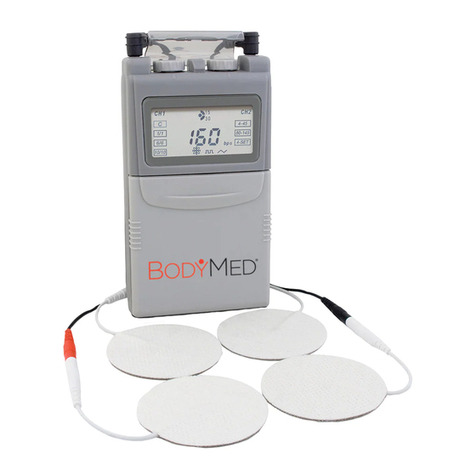
BodyMed
BodyMed ZZAIF400 User manual
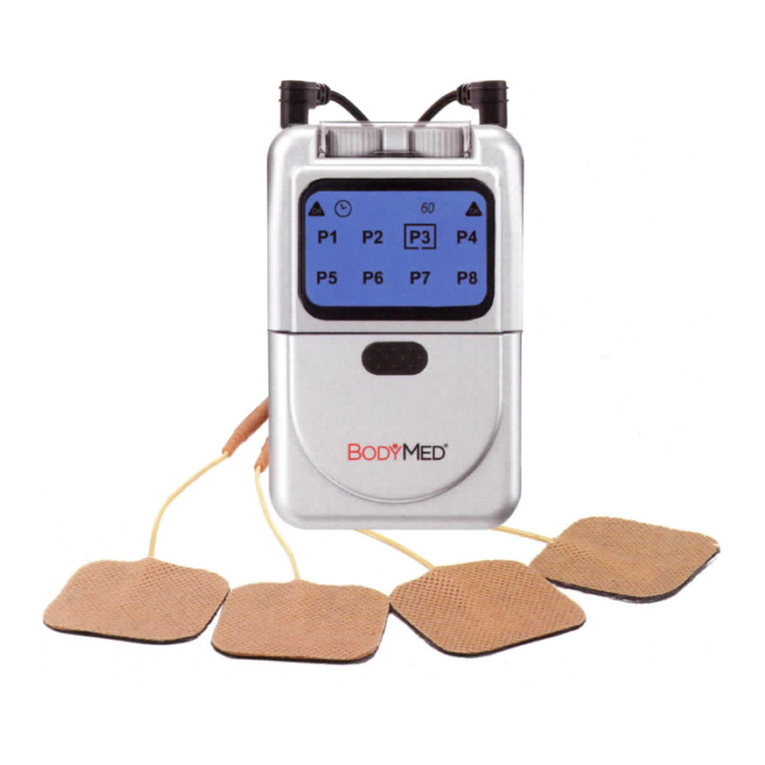
BodyMed
BodyMed ZZAEV820OTC User manual
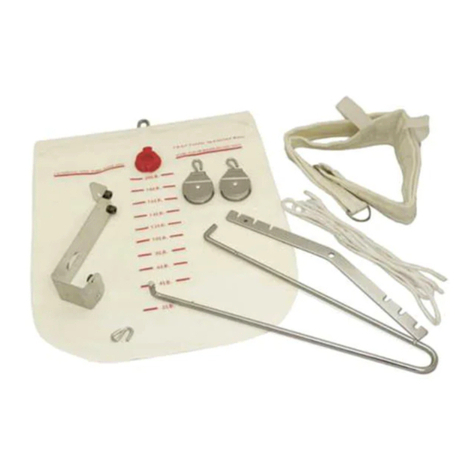
BodyMed
BodyMed BDMDOORTC User manual
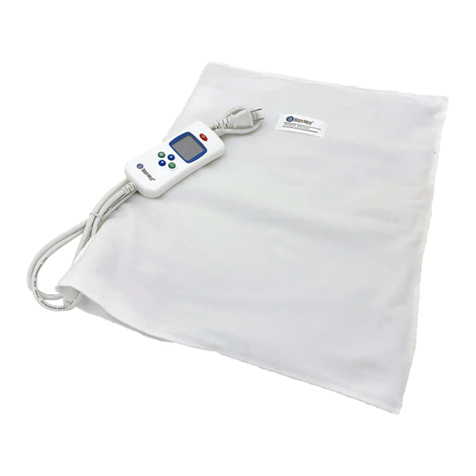
BodyMed
BodyMed ZZHP147 User manual

BodyMed
BodyMed ZZACOMBOBDPT1 User manual
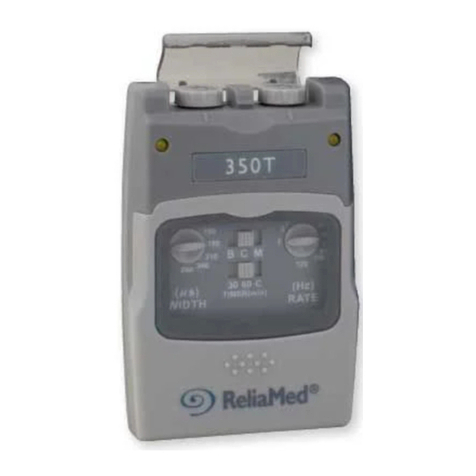
BodyMed
BodyMed zza350t User manual
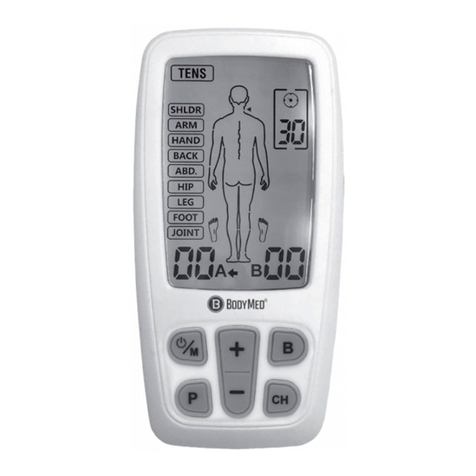
BodyMed
BodyMed ZZACOMBOBDPT2 User manual
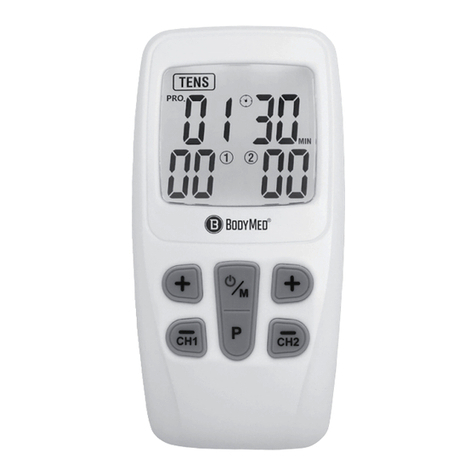
BodyMed
BodyMed ZZACOMBO User manual
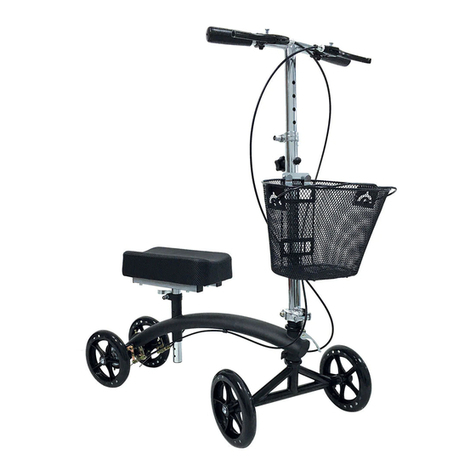
BodyMed
BodyMed ZZRWAL03 User manual
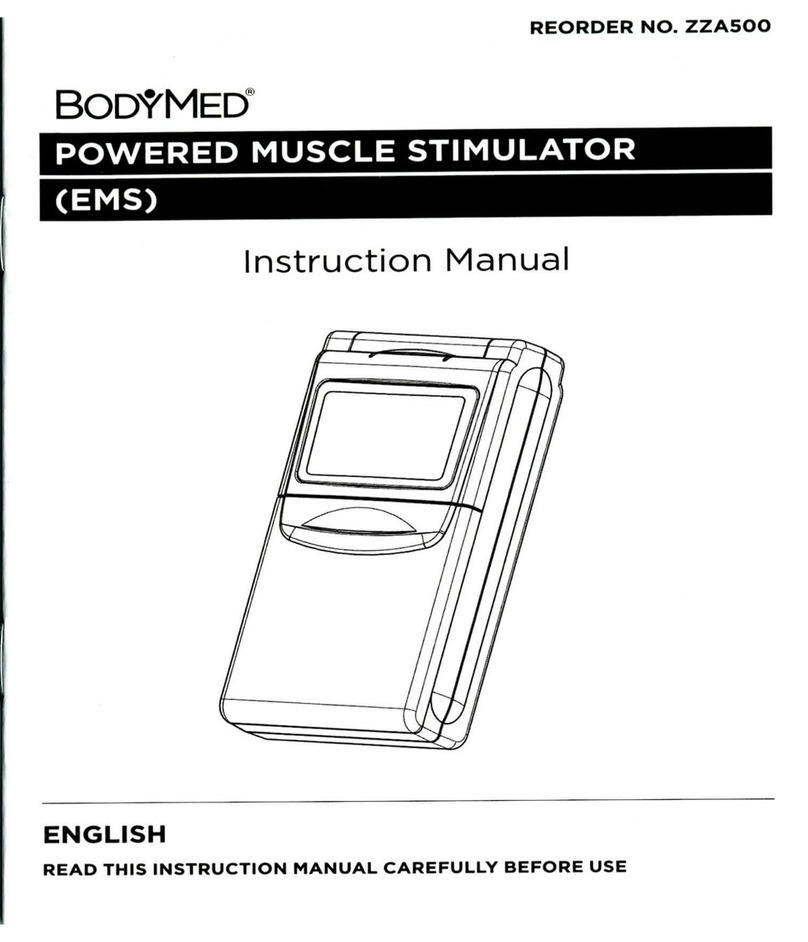
BodyMed
BodyMed ZZA500 User manual
